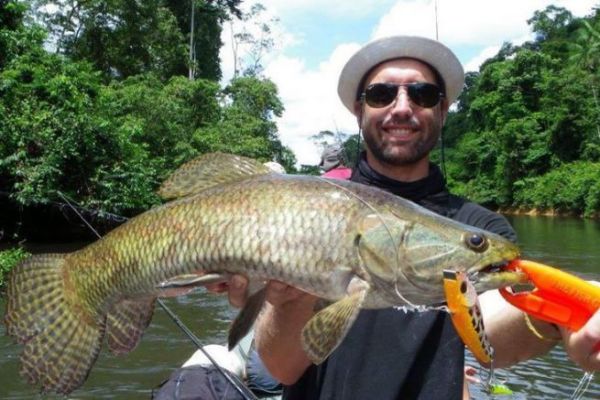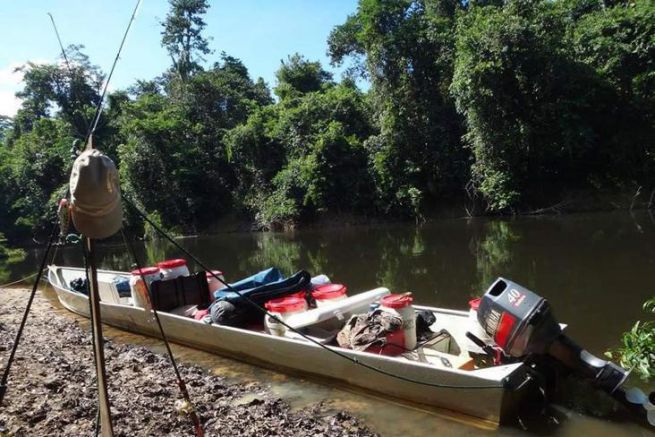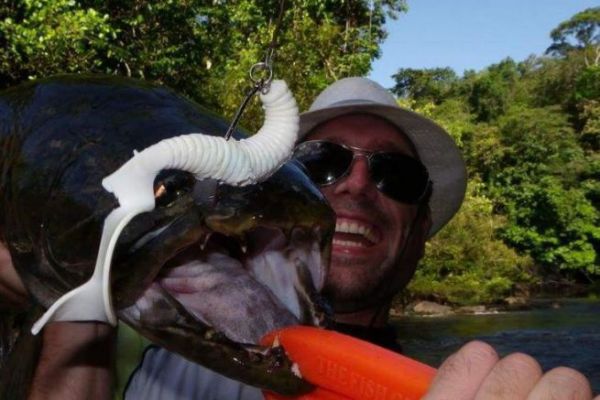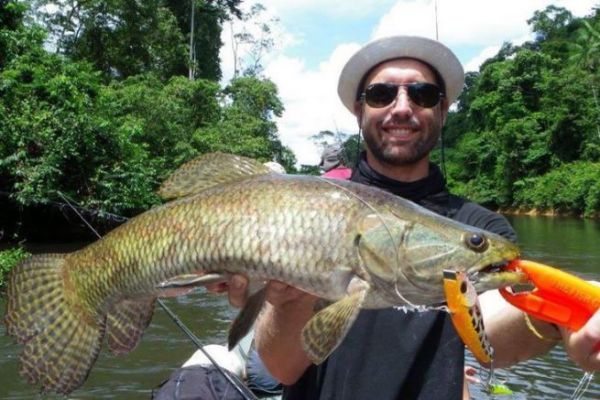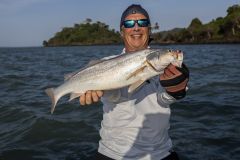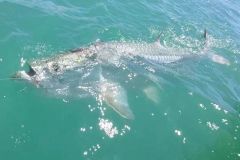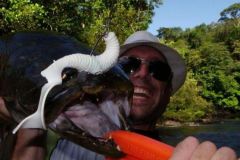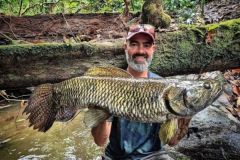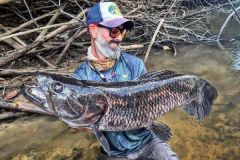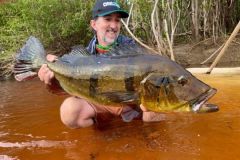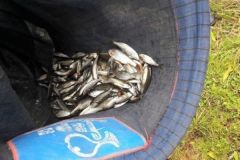In the heart of Guyana's jungle, the Sinnamary is a wild river. The groomed banks and clear fishing spots you're used to don't exist. Not only do you have to go looking for Hoplas Aimara in the middle of the most crowded spots, you also have to extract it.
The philosophy you must follow is that this fish has only one metre to go to hide behind an obstacle, synonymous with its doom. So, as soon as you hook the fish, you must fight hard to prevent it from making that famous fatal metre.
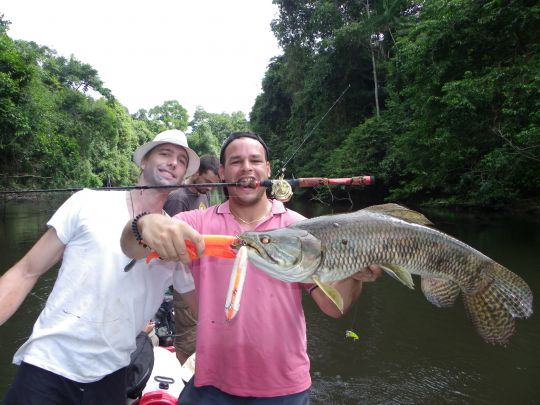
A rod with plenty of reserve power
Because you will often be casting large lures between 30 and 80 g, the power of your rod will need to be adapted, but above all it must have the following characteristics:
- A fast action to make the hooks penetrate the powerful jaws of the a´mara and to extract them from their mark.
- Line power between 40 and 60 lbs. Two sets are ideal. One around 60-70 lbs with a length of 2 m for the most crowded spaces where access is difficult. A lighter one around 30-40 lbs of power with a length of 2.20 m for slightly more open spaces, where you'll be able to throw more and fight with more room to manoeuvre.
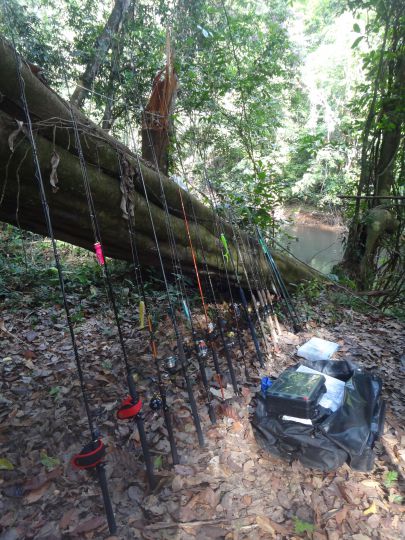
Casting is the key
The closer your lure lands to the bank and obstacles, the more bites you'll get. To achieve this, the use of a casting set is a huge advantage.
On the other hand, the bite sometimes occurs as soon as the lure hits the surface. When spinning, by the time you close the pickup, the lure may already be in the water. In any case, it's important to slow down your lure before landing so that it doesn't submerge. The aimara will sometimes attack the lure as soon as it lands, and if it's 30 cm below the surface, it may be too late to extract it by the time you realize it's there.
Finally, cast reels are true winches and will not suffer from the use of big lures and the power of fighting.
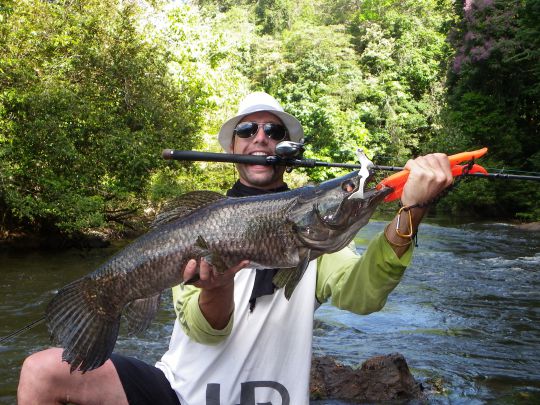
The reel and the braid
The reel, if possible a casting reel, will be fitted with braid of between 40 and 60 lbs, preferably 4 strands given the environment you'll be fishing in. Finish your rig with a 60 to 70/100 fluorocarbon leader and a solid, sleeved 49-strand steel leader. There's no question of finesse, and the use of a steel leader is essential to avoid losing fish.
Finally, either opt for a very powerful staple or a broken ring to connect your lures.
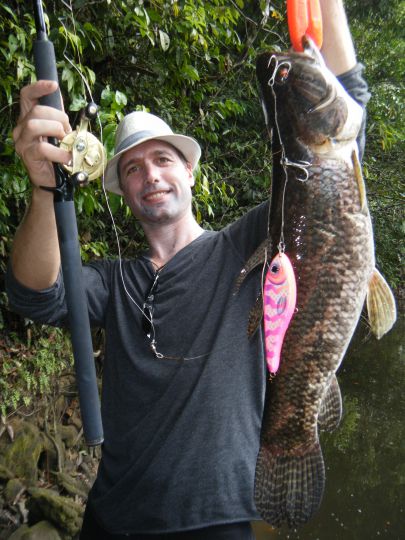
A varied and well thought-out box of lures
To track the aimara, you'll need the following lures:
- Poppers with a wide opening of between 30 and 60 g, such as Yozuri's Bull Pop or Feed Popper
- Stickbaits from 12 to 16 cm. Strike pro's Top Bandit proved excellent and the timeless Superspook!
- 12 to 15 cm jerkbaits: Bomber's Herky Jerky and Strike Pro's Buster jerk.
- Large spinnerbaits (30 to 50 g) with very powerful armature.
- Soft lures mounted on large 12/0 leaded Texas hooks (Owner makes excellent ones).
- And for me, lipless essentials like the Flatt Shad from SÚbile and especially the Screamin Devil from Spro.
- Possibly swimbaits, which also work very well.
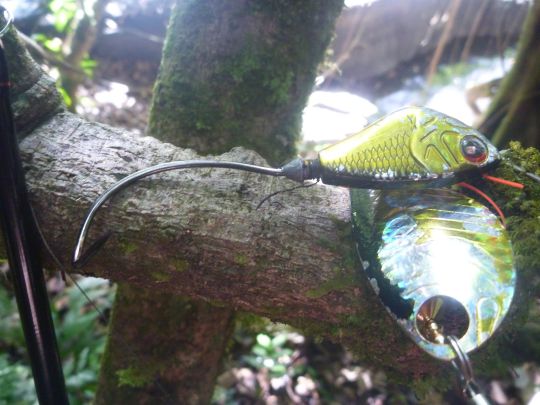

 /
/ 